
Lijiang is a prefecture-level city in the northwest of Yunnan Province, China. It has a population of about 1,25 million people (2010).
History
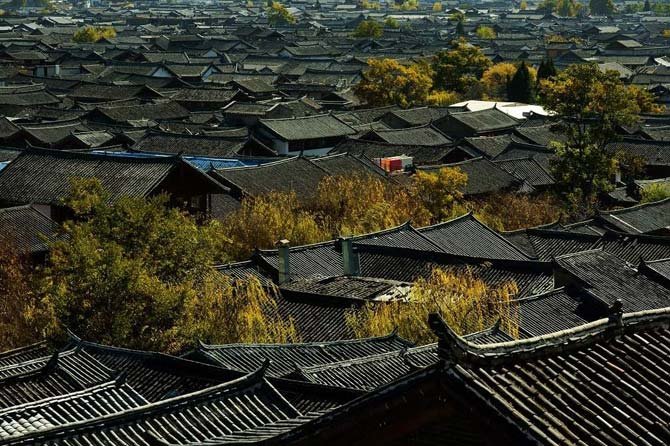
The town has a history going back more than 800 years and was once a confluence for trade along the old tea horse road.
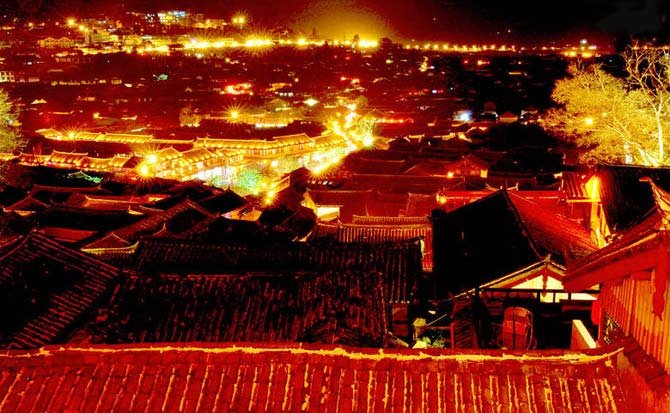
The Lijiang Old Town is famous for its orderly system of waterways and bridges. The old town of Lijiang differs from other ancient Chinese cities in architecture, history and the culture of its traditional residents, the Naxi people. Lijiang old town (including Dayan, Baisha and Shuhe) was registered on the UNESCO World Heritage List on December 4, 1997. Since then, the local government has taken more responsability for the development and protection of the old city. Lijiang's tourism also boomed, and travellers from around the world flooded in; although many locals fear that due to much of the development, the old town of Lijiang will lose its appeal.
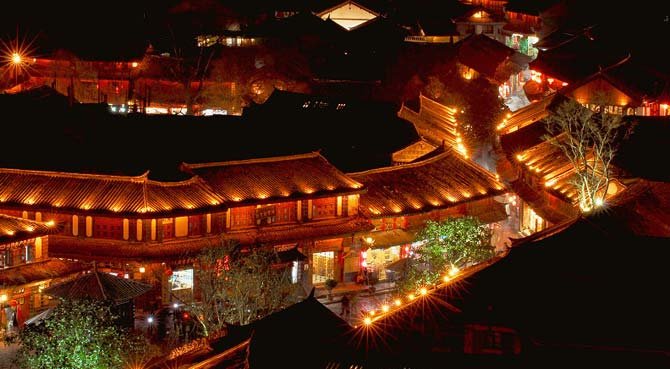
Recently, the government has started to develop additional "old city" sections adjiacent to the site of the original old city. This is to accomodate the large number of tourists who walk the cobblestone streets (cars are not allowed in the old city), typically as part of package tours. Lijiang City replaced former administrative region Lijiang Prefecture. Lijiang Prefecture no longer exists today. It was under the rule of the Mu family local commanders during the Ming Dynasty and Qing Dynasty.
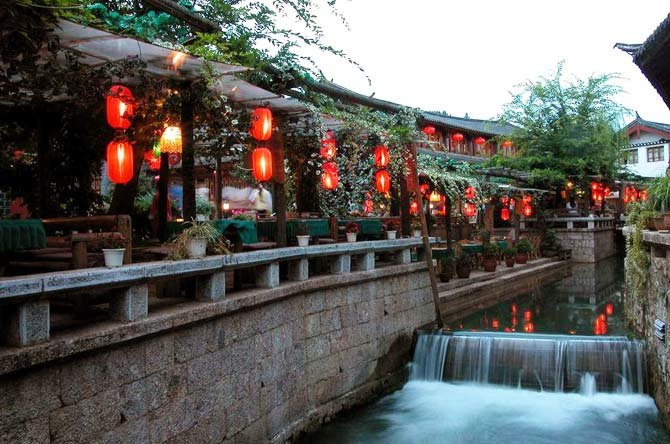
Lijiang is also home to the Jade Water Village, a Dongba Cultural Museum and Lashi Lake, a nice getaway at the western edge of the city.
Culture
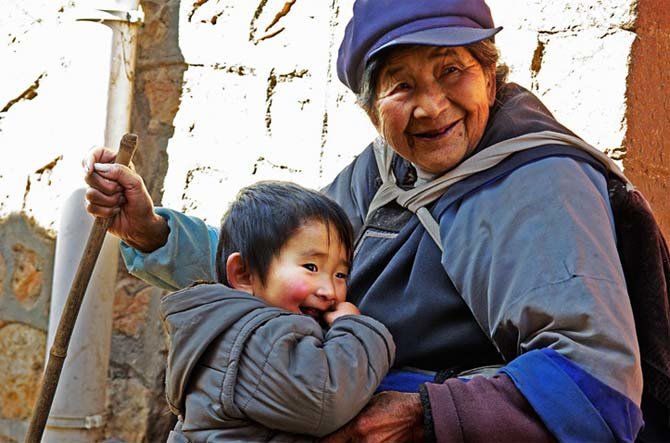
The Naxi people perform Dongjing Music, an ancient form of Taoist ritual music. Lijiang is also the site of the Lijiang Snow Mountain Music Festival, which features Chinese rock music. The festival was created by Chinese pop musician Cui Jian.
Threats
The influx of tourist that followed the inscription of the Ancient town of Lijiang onto UNESCO's World Heritage list has had dramatic effects. Many of the former inhabitants of the ancient city have had to move away due to rising costs of housing and food items, only to be replaced by tourist establishment. The growth of these tourism businesses is largely uncontrolled.
Climate
Owing to its low latitude and high elevation, the city centre of Lijiang experiences a mild subtropical highland climate. Winters feature mild days coupled with nights that may go below freezing, as well as the driest and sunniest conditions of the year; January averages 6.0 °C (42.8 °F). Summers are warm and damp, with a June average of 18.4 °C (65.1 °F), which is much cooler than lowland areas. The annual mean temperature is 12.7 °C (54.9 °F), while precipitation averages around 970 millimetres (38 in), focused heavily from June to September.
Transport
Lijiang Airport (LJG) is located in the south of Lijiang city, 28 km away from downtown. There is an airport shuttle bus service in downtown Lijiang. The airport was opened in July 1995 and has connection flights not only wihtin Yunnan but also to important cities all over China, like Beijing. It also offers chartered airplane service. There are flights from Kunming to Lijiang every day and is about 50 minutes flight time.
There are bus services to, amongst others, Kunming City (8 hrs), Dali City (3 hrs), the Tiger Leaping Gorge (2.5 hrs) and Shangri-La (4 hrs).
There is a train service to Kunming with overnight (8-10hrs) , high speed train (2-3.5 hrs) will open in June 2019.
Sites
Nearby Lijiang is the Baishui Terrace.
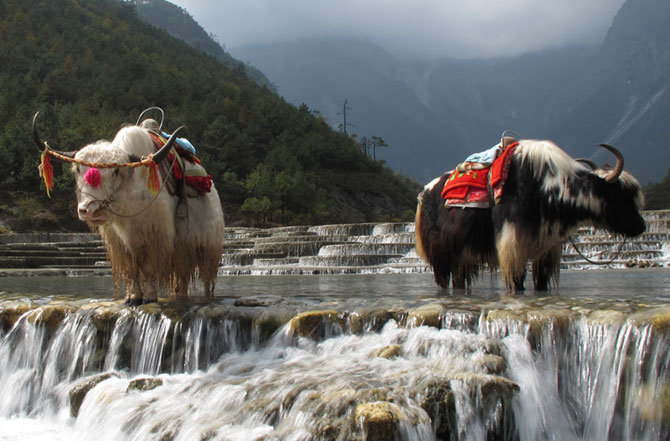
Baishuitai is an area where spring water flows over a sinter terrace, leaving behind travertine. It's situated just north of Lijiang City.
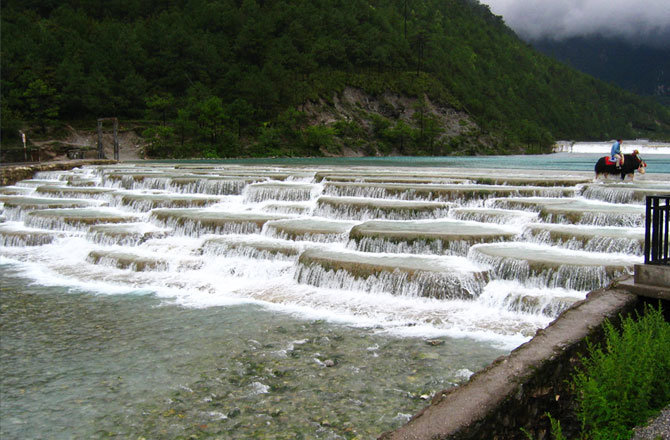
In Lijiiang itself, also the famous Black Dragon Pool is located. It is a famous pond in the scenic Jade Spring Park (Yu Quan Gong Yuan) located at the foot of Elephant Hill, a short walk north of the Old Town of Lijiang. It was built in 1737 during the Qing Dynasty and offers a spectacular view on the region's tallest mountain, Jade Dragon Snow Mountain, over its white marble bridge.
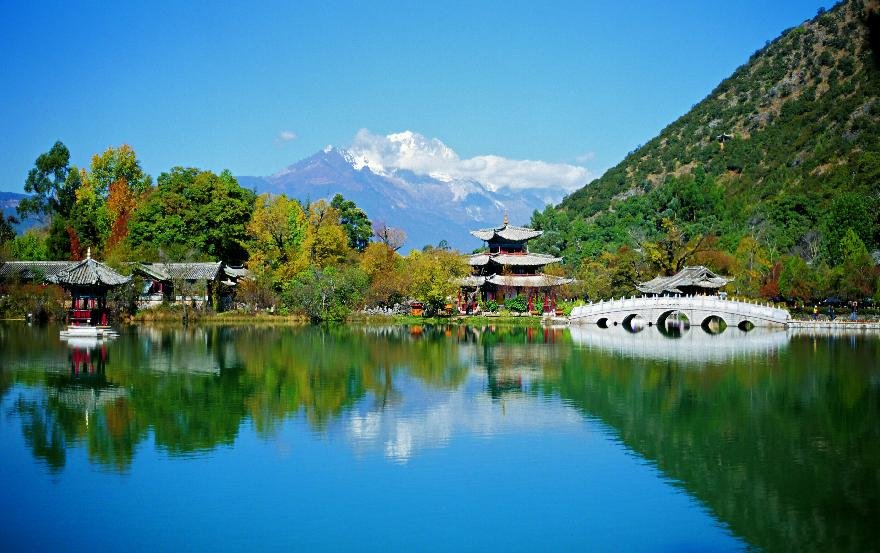
Shuhe Old Town
Four kilometers to the northwest of the Old Town of Lijiang, at the foot of Jade Dragon Snow Mountain, lies a compact village hidden in the forest, the Old Town of Shuhe. It’s the town where Naxi people (the most famous minority in Lijiang) first chose to live in so it is called 'the hometown of springs'. It is made up of two parts, one is developed for tourism and some of Naxi people are still living in the other part. When compared to Lijiang, Shuhe is more quiet and suitable for relaxing. There are two rivers flowing across the Shuhe Old Town, both of them are approximately 3 meters wide, and stores and bars are built by the river side. At night, some folk singers perform in local bars. Ride a horse through the Chamagudao (Tea Horse Road), an old path which was used formerly for transporting salt, tea and other goods. On the mountain top of Chamagudao, you can enjoy the view of whole Lijiang. The town is alive with the strong culture of primitive simplicity. If you are tired by the hustle and bustle of city life, come here, the tranquility of country life will certainly relax and revive you.
Twinning
Sister city: Kazan, Tatarstan, Russia
Roanoke, Virginia, United States
Takayama, Gifu, Japan
(wikipedia)
- 1994 reads
